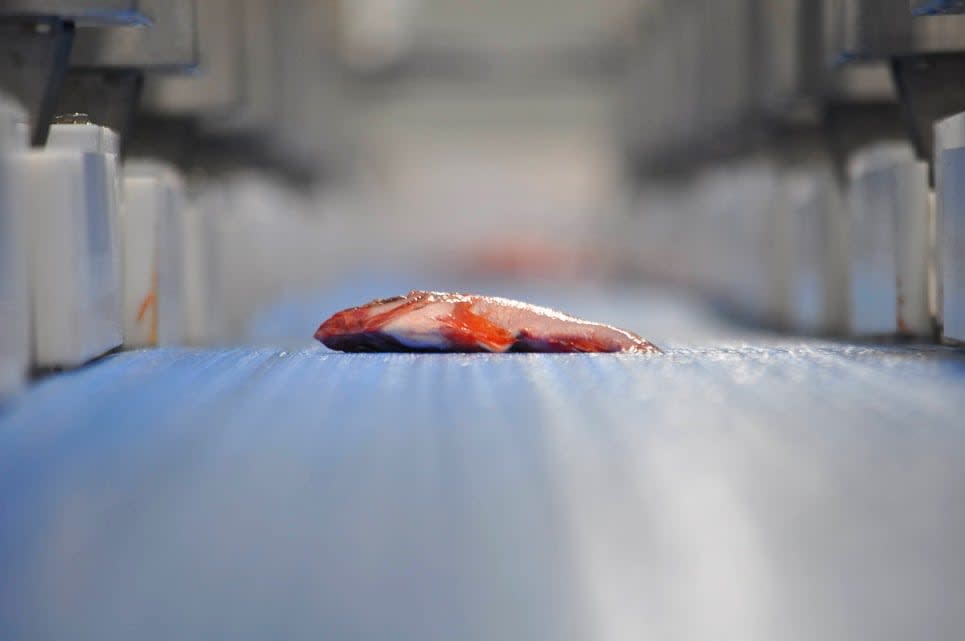MPs challenge 'big boat' share of Gulf redfish quota as fishery gears up to reopen

Federal fisheries officials are defending a decision to allocate the majority of the redfish quota in the Gulf of St. Lawrence to companies operating large vessels, most of which are based in Nova Scotia.
The fishery will reopen in June after a 30-year moratorium.
Senior bureaucrats from the department appeared before a parliamentary committee on Tuesday and faced hostile questions from MPs from three different parties — a reminder that the offshore sector, defined as vessels over 100 feet, have few political friends when it comes to fighting over quotas in Atlantic Canada.
MPs wanted to know why "big boats" will retain 58 per cent of the quota when the so-called "Unit 1" redfish fishery restarts.
In announcing the resumption of large-scale harvesting last month, DFO reduced the share of the quota that the offshore sector has historically held by 20 per cent.
The department gave 10 per cent to the struggling Gulf shrimp fleet and 10 per cent to an unidentified pool of Indigenous communities.
Still, the remaining offshore allocation was challenged on three fronts: fairness to coastal communities, the risk of overfishing and the allocation's basis on historical share.
Changes amount to 'corporatization,' MP says
New Democrat MP Lisa Marie Barron labelled it "corporatization" of the fishery.
"Can you share a little bit more about how you feel this quantity of quota being allocated to the offshore fisheries, how that benefits local fishers, local communities and those who are seeing this resource and marine ecosystem right on their front doorsteps being utilized for offshore corporate interests?" Barron asked.
Adam Burns, assistant deputy minister of the programs sector, replied the vessels are crewed by people living in coastal communities in the region.
"Those businesses and the processing facilities associated with them are located in coastal communities in Atlantic Canada and Quebec. So that fleet's revenue and business activities do indeed go to support coastal communities as well," he said.
Inshore fishermen "understand best what's happening on the water. They are better able to provide the data required to determine the best steps forward. They are the one's invested in the sustainability of the fisheries," Barron said.
Liberal MP blames offshore for fishery collapse
"We know from past practices that much of the reason why we've gotten in the positions that we have is because of the fact that we had those who were not invested in the coastal communities, who were not invested in the sustainability of local fisheries making decisions that were poor decisions," Barron said.
However, offshore boats have provided scientific data at sea to DFO on the status of redfish stocks for many years.
New Brunswick Liberal MP Serge Cormier blamed the "big boats" for the redfish shutdown in the 1990s. The closure was part of a region-wide collapse in ground fish stocks. Redfish is one of the few that has fully rebounded.
"Don't you think that we should look very carefully at that and not allow those big boats coming in the Gulf of St. Lawrence, so we don't have another decline of this fishery for years to come," Cormier said.
Burns said the quota and management measures will ensure conservation of the redfish stock.
Conservative fisheries critic Clifford Small argued the historical share isn't set in stone, saying in 1978 the inshore sector held 60 per cent of the redfish quota.
He wants smaller boats to harvest Gulf redfish for bait.
"Redfish quota is like a game of musical chairs. Has it ever been fixed? Because history's history, it can't be a snapshot of one year, 1994," he said.
Burns explained that was the allocation when the fishery was closed.
Four days of consultations with industry and stakeholders will be held in Halifax next week to discuss setting the maximum redfish quota and management measures to reduce by-catch — meaning other species that are accidentally captured by the fishery.
MORE TOP STORIES


